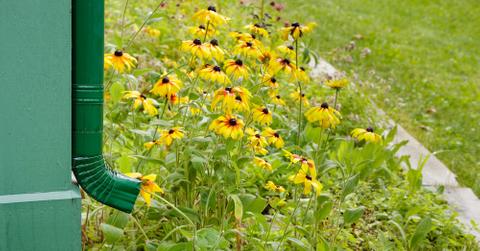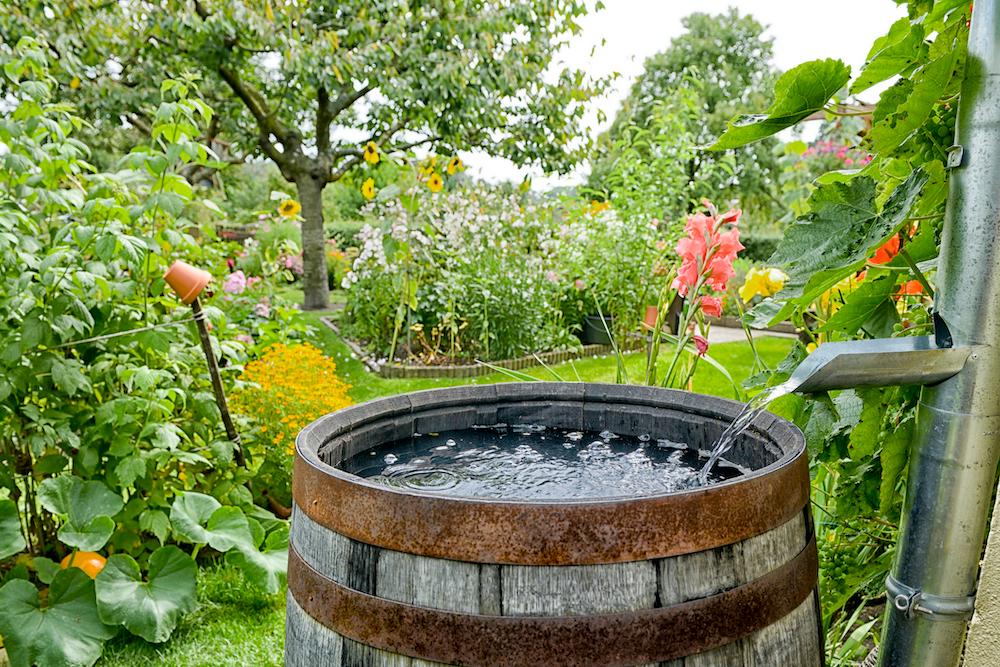Rainscaping: The Trending Way to Beautify Your Yard While Combating Water Pollution
10 trillion gallons of untreated runoff ends up in U.S. waterways each year, and rainscaping can reduce this water pollution.
Published April 19 2024, 1:29 p.m. ET

There are many ways to have a more sustainable home, and rainscaping is a trending and rewarding way to beautify your yard while prioritizing water conservation and reducing water pollution. Using these landscaping techniques, you can reimagine your yard and turn it into a thriving habitat that captures rain runoff before it becomes contaminated and pollutes other water sources.
Like gardening, rainscaping provides many environmental benefits, and there's no one-size-fits-all approach so that you can get creative with your designs! Before you get started, it's important to understand what rainscaping can do and some basic methods you can incorporate into your vision for your yard.
So, what is rainscaping? People are creating rainscapes to combat water pollution.
Rainscaping is a method of sustainable landscaping that redirects rainfall throughout the yard so that it can be absorbed into the ground instead of carried to non-permeable surfaces. It's often closely associated with rain gardens, an important part of rainscaping designs.
According to The Missouri Botanical Garden, rainscaping has many benefits, including improving soil health, adding biodiversity and wildlife habitats, increasing property values, and reducing watering needs (and, in turn, water bills). However, the main reason for rainscaping is that it is extremely effective in combating water pollution caused by runoff.

Why is rain runoff an issue?
According to the Groundwater Foundation, rainfall collects on hard surfaces like driveways, building rooftops, parking lots, and sidewalks. Then, it transports pollutants like oil, pesticides, fertilizer, or chemicals to storm drains, which flow into streams and other waterways. Urbanization contributes to the problem as natural habitats normally absorb the rainwater and are transformed into nonpermeable asphalt, carrying untreated, dirty runoff into freshwater sources.

It’s no small amount of polluted water, either. The National Oceanic and Atmospheric Administration (NOAA) estimates that yearly, 10 trillion gallons of untreated runoff are in U.S. streams and waterways. About 80 percent of ocean pollution originates on land, much of which is non-source pollution that can be attributed to runoff.
What are some rainscaping ideas?
You can get as creative as you want with rainscaping, but here are some common components to consider in your design:
- Create a rain garden. Rain gardens are an integral part of rainscaping. They consist of shallow depressions with native plants designed to capture rain and filter the runoff. These native plants can create a habitat for birds, butterflies, bees, and other insects.
- Harvest rainwater. Rain barrels can be utilized to collect rainwater that can then be used for irrigation.

- Disconnect downspouts. Downspouts are gutters used to prevent water damage at the base of a home by redirecting the roof run-off to a paved driveway or directly into a storm drainage system. The EPA recommends disconnecting the downspout so that it can flow into a rain barrel or directly into the lawn.
- Make permeable walkways. Instead of using hard surfaces for walkways, use pea gravel, mulch, or permeable pavers to allow more water to be absorbed into the ground.
- Create a bioswale. These are similar to a rain garden but are designed to catch more runoff through a curved shape like a linear pathway, whereas rain gardens are wider, like a bowl.
For more rainscaping ideas, see the Missouri Botanical Garden’s guide to rainscaping.